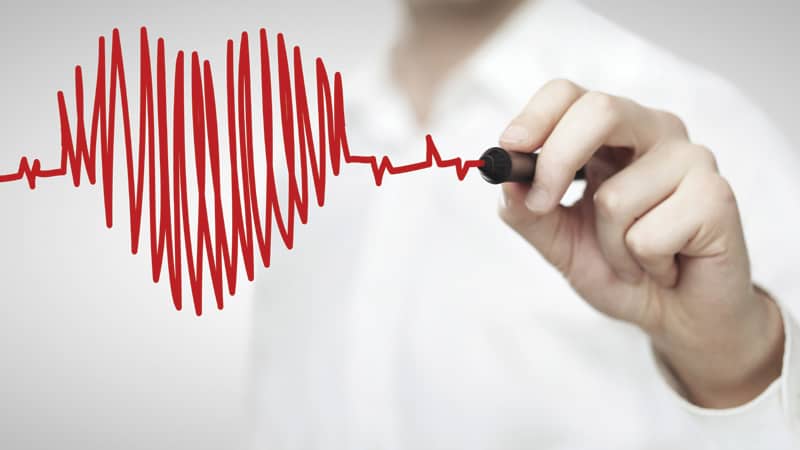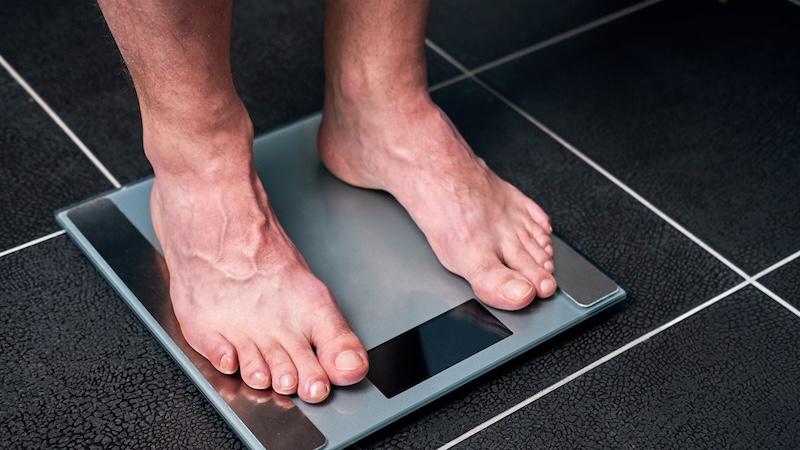And the Beat Goes On
With cardiac rehab, the treatment continues after you leave the hospital

Most patients recovering from a cardiovascular event such as a heart attack or heart failure aren’t thinking about rehabbing their heart, but that should be top of mind to help guarantee future health.
“Cardiac rehab is an important part of the treatment plan for patients who have had heart attacks, have had stent placement and who have undergone cardiovascular surgery,” says Dr. Hem Bhardwaj, assistant professor in the Department of Internal Medicine’s Division of Cardiology at the VCU School of Medicine. “It’s a medically supervised program designed to help you improve your cardiovascular health.”
Typically 12 to 18 weeks long, cardiopulmonary rehabilitation consists of exercise counseling and training, diet, nutrition, activity, stress management and addressing the psychosocial or emotional aspect of the disease. The structured program is designed for patients who have cardiovascular disease and have experienced a heart attack, heart failure, angioplasty or heart surgery.
“We address all the modifiable risk factors,” says Ross Barber, director of cardiopulmonary rehabilitation at Bon Secours Virginia. “We also provide a smoking cessation program.”
THE BENEFITS
Cardiopulmonary rehabilitation has been shown to reduce the rates of cardiovascular deaths and readmissions, according to The American College of Cardiology.
“Ninety percent of cardiovascular disease morbidity and mortality can be prevented,” says Dr. Vikas K. Rathi, director of cardiovascular MRI at Bon Secours Heart & Vascular Institute. Cardiac rehab “can help prevent risk factors such as poor nutrition, which can lead to diabetes and high cholesterol. Tobacco smoking and the lack of exercise are other factors … It helps people live a healthier lifestyle and be able to do more and have a better quality of life.”
The program also helps people adapt to their current cardiac problems.
The goal of cardiac rehab is to optimize a patient’s cardiovascular fitness. “It’s the combination of the program that helps along with other education,” Rathi says. Messages such as “don’t miss doses of medicine and don’t smoke are a big part of the overall treatment plan for a cardiac event.”
WHAT TO EXPECT
Patients learn about cardiac rehab and its benefits while they are in the hospital recovering. “Our goal is early cardiopulmonary enrollment,” Barber says. “We start to track patients who would benefit from rehab or who have been referred during the inpatient phase and follow up with them.”
When a patient’s home health program ends, the outpatient cardiac rehab program begins. “It’s a seamless transition from one to the other,” Barber says.
The process requires a team approach that often includes doctors, nurses, exercise specialists, dietitians, nurse practitioners and behavior therapists. “Patients meet with a registered nurse to go over their medical history and begin the education process. They then meet with an exercise specialist and together develop an individualized exercise prescription. The patient is given their schedule for therapy sessions and a one-on-one meeting with the registered dietitian,” Barber says.
In most cases, rehab at Bon Secours consists of 36 sessions in an outpatient facility at Reynolds Crossing, Memorial Regional or St. Francis. Programs are tailored to the individual. During the program, participants are monitored looking at a real-time electrocardiogram while exercising; they attend up to nine education classes; and their blood pressure is monitored. They are given surveys to complete when the program starts and ends.
“Our cardiac rehab programs are under the direct supervision of a physician/medical director that signs off on the patient’s treatment plan. Everyone will have customized exercise prescription and a flow sheet. We work with them to increase their exercise regime while teaching them about their disease process and how to incorporate lifestyle changes that can positively impact their health. When they graduate, they feel confident,” Barber says.
When the program ends, people can enroll in a self-pay program that is more patient driven. “It’s usually a one-month program where we teach them to be self-sufficient,” Barber says, noting they are not monitored with an electrocardiogram in self-pay programs. “We are training them to improve their health and lifestyle. We are helping them resume physical activity, whatever that might be.”
Even though the programs are well tested and result in positive changes, not every patient uses them, and that can be problematic. “We understand there are social and psychological barriers,” says Rathi, noting that Bon Secours has programs available that offer lower-cost financial options. “Insurance may not cover some patients.”
He finds that certain patient populations such as women and various ethnic groups utilize the programs less than other groups. “Women tend to get less care or they don’t have that much access to the care,” he says.
According to a 2016 study in the Canadian Journal of Cardiology, data showed that only 27.3 percent of women participated. “There’s a huge gap in enrollment,” Rathi says. “This program helps all groups.”
HOW TO STAY OUT OF CARDIO REHAB
The best way to minimize chances of a cardiovascular event is to follow Bhardwaj’s advice:
- Eat healthy.
- Exercise as much as you can.
- If you smoke, stop smoking.
- If you have diabetes or high cholesterol, work with your medical doctor to control it.
- Know your numbers for high blood pressure, cholesterol and sugar levels.
“Knowledge is power,” Bhardwaj says. “Get the lab work and sit down with your primary care doctor or cardiologist. Don’t avoid it. You need that partner. I think of the doctor as a partner to help you achieve a heart-healthy lifestyle.”
Award-winning writer Joan Tupponce writes about a variety of subjects for publications that include O, The Oprah Magazine, AmericanWay, U.S. Airways magazine and AAA World.
WILL INSURANCE COVER MY CARE?
By Jeffrey Redekopp
Cardiac rehab is covered by Medicare, Medicaid and most commercial insurance plans.* The timeframe for coverage will vary depending on your insurance carrier. Typically, most insurance plans will cover between 12 and 36 visits for one series of cardiac rehab.
- Medicare Part B covers 80% of the cost of 36 visits over a period of 36 consecutive weeks. A Medicare supplement or secondary insurance generally pays for most, if not all, of the remainder.
- Medicaid also covers 36 visits over a 36-week period and usually requires a minimal co-payment for each visit.
- Commercial insurance carriers such as United Healthcare, Federal Blue Cross Blue Shield or Blue Cross Blue Shield of Virginia, Cigna and Aetna cover 12 to 36 visits depending on the type of plan you have. Some policies, such as those with HMOs, require precertification from your physician to pay for the therapy.
Insurance plans typically cover cardiac rehab for diagnoses including:
- Chronic Stable Angina
- Myocardial Infarction (heart attack)
- Percutaneous Transluminal Coronary Atherectomy (PTCA) with or without stent
- Coronary Artery Bypass Graft (CABG)
- Cardiac Valve Surgery
- Chronic Stable Heart Failure
* Contact your insurance carrier to confirm details.


